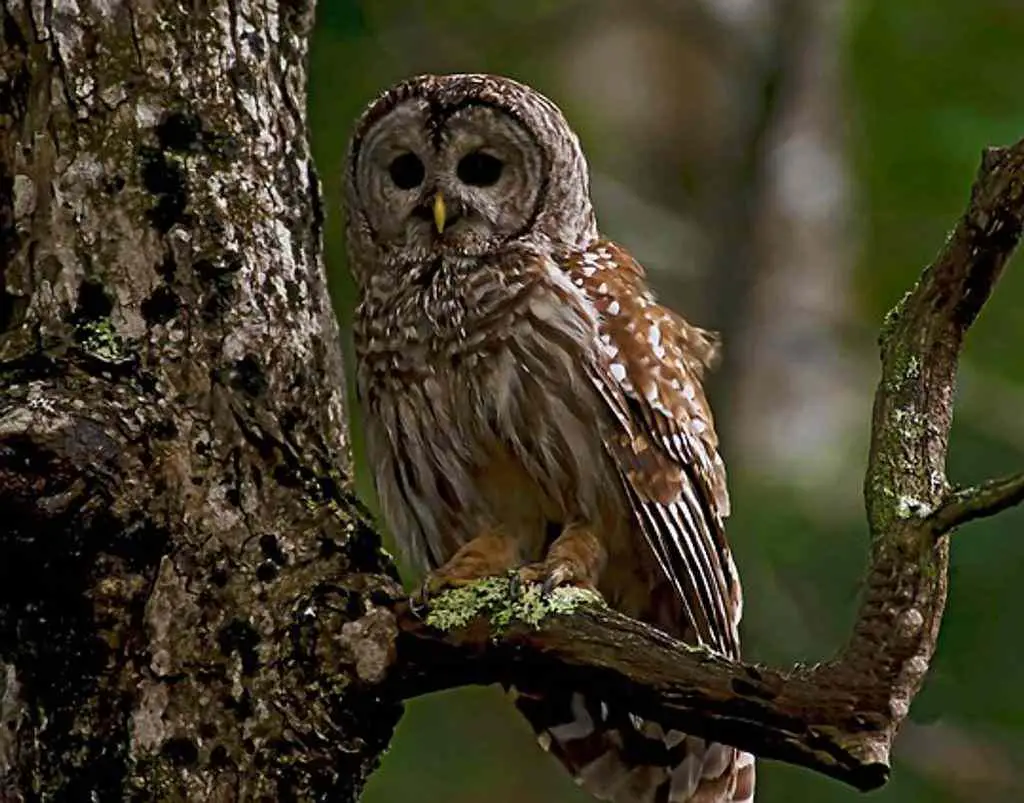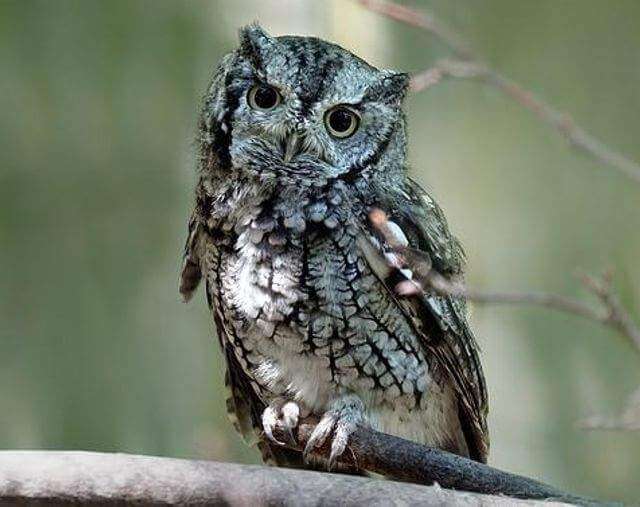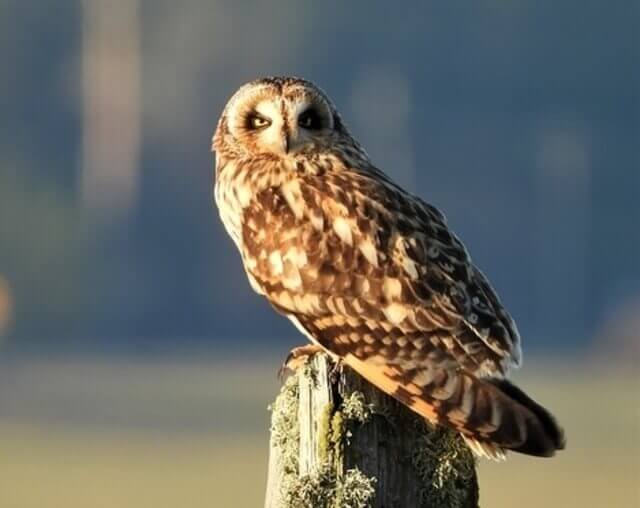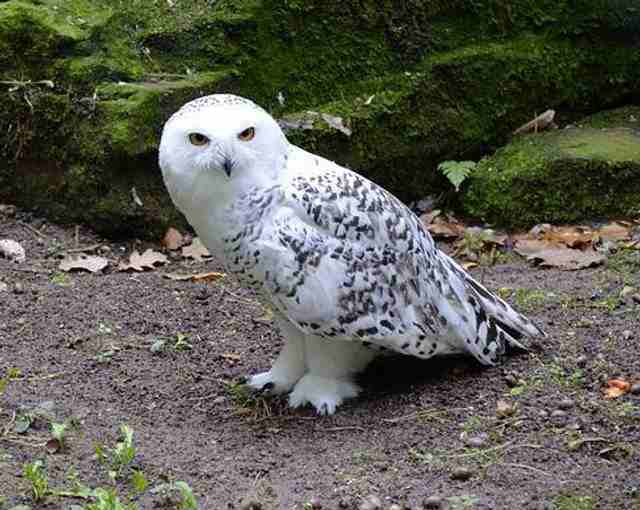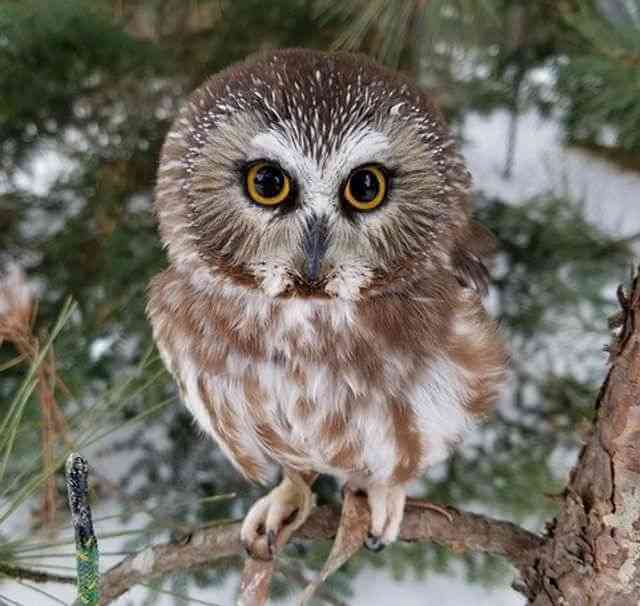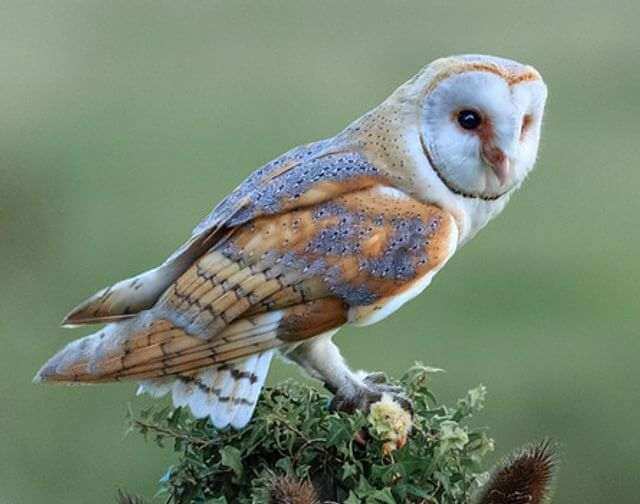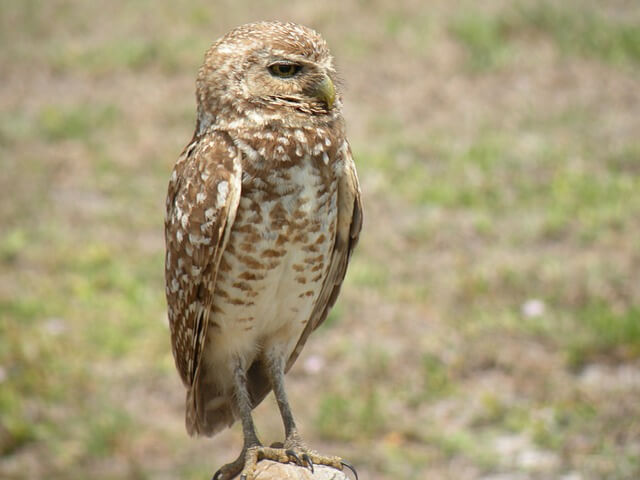Are you an owl lover? If so, Illinois has plenty to offer in the form of these nocturnal creatures. There are 9 types of owls in Illinois for the year 2023.
Each owl is listed below with photos, identification and frequency of occurrence. Owls can be found in all parts of the state, but they are most common in the far southern and central parts.
Table of Contents
Types of Owls in Illinois
Great Horned Owl
- Length: 17.7-24.8 in (45-63 cm)
- Weight: 32.1-88.2 oz. (910-2500 g)
- Wingspan: 39.8-57.1 in (101-145 cm)
- Scientific Name: Bubo virginianus
- Frequency of Occurrence: 1.70% (Statistic by: eBird)
- Where To Find Them: The great horned owl is a large, powerful owl that can be found in many locations in Illinois. They are found mainly in the eastern portion of the state, but have been seen as far west as Macomb and Pulaski counties. They prefer to live near large forests or open areas with lots of trees.
General Information: The Great Horned Owl is found in most of North America, except for the extreme south. It occupies a wide range of habitats, from open forests to dense coniferous forests. They are typically found in areas with large trees and plenty of prey.
The diet consists mostly of small mammals, but they will also eat birds, reptiles, insects, fish, and invertebrates. They are monogamous and typically nest in high ground, such as a tree or cliff face. They usually lay 1-4 eggs that are incubated for 30-37 days by the female.
Related Post: 35 Fun Facts About The Great Horned Owl (Detailed)
Barred Owl
- Length: 16.9-19.7″ in (43-50 cm)
- Weight: 16.6-37.0 oz. (470-1050 g)
- Wingspan: 39.0-43.3″ in (99-110 cm)
- Scientific Name: Strix varia
- Frequency of Occurrence: 1.46%
- Where To Find Them: There have also been reports of them being spotted in Springfield, Peoria, Bloomington, Urbana-Champaign, Decatur, and Rockford.
General Information: The barred owl is a large owl found in the eastern and central United States. It is one of the largest owls in the United States. The barred owl ranges across much of the eastern and central United States, from southern Canada to northern Florida and west to Kansas and Oklahoma. It inhabits open woodlands, shrublands, and even urban areas, where it hunts mainly at night.
The barred owl’s diet consists mainly of small mammals such as voles, rabbits, chipmunks, mice, rabbits, but it also eats amphibians, reptiles, and invertebrates and medium-sized birds. Nests are built in tree cavities or on high ground, usually near water. There are usually lay one to five eggs per clutch with an incubation period of 28-33 days.
Eastern Screech Owl
- Length: 6.3-9.8″ in (16-25 cm)
- Weight: 4.3-8.6 oz. (121-244 g)
- Wingspan: 18.9-24.0″ in (48-61 cm)
- Scientific Name: Megascops asio
- Frequency of Occurrence: 0.3336%
- Where To Find Them: The owl is most commonly found in the southern half of the state, but has been observed as far north as Macomb and Jackson counties.
General Information: The Eastern Screech Owl is a small, but powerful owl found in the eastern United States. The owl’s distribution range extends from the Atlantic to the Pacific coastlines, and it inhabits a variety of habitats, including forests, swamps, and farmland.
The owl feeds primarily on small animals such as, small birds, voles, rats, mice, squirrels, moles, and even rabbits. Eastern Screech Owls typically nest in tree cavities or on high ground overlooking water; they have 2-6 eggs that are incubated for around 26-30 days.
Short-eared Owl
- Length: 13.4-16.9 in (34-43 cm)
- Weight: 7.3-16.8 oz. (206-475 g)
- Wingspan: 33.5-40.5 in (85-103 cm)
- Scientific Name: Asio flammeus
- Frequency of Occurrence: 0.2827%
- Where To Find Them: They can be found in many locations in Illinois, including at the University of Illinois at Urbana-Champaign, where they are commonly seen in the vicinity of Griffin Hall.
General Information: The short-eared owl (Asio flammeus) is a medium-sized owl found in the eastern United States and Canada. The short-eared owl’s distribution range includes most of the eastern half of the United States, as well as southern Ontario and Quebec in Canada. The short-eared owl’s habitat includes woodlands, forests, and suburban areas. The short-eared owl is primarily a nocturnal animal, but it will also forage during the day.
Its diet consists mostly of small rodents such as voles, lemmings, moles, shrews, rabbits and small birds, but it will also eat fruits, insects, and eggs. Short-eared owls are solitary animals that nest in tree cavities or on ledges. They typically lay 1-2 broods per year, with a clutch size of 1-11 eggs and an incubation period of 21-36 days.
Snowy Owl
- Length: 20.5-27.9 in (52-71 cm)
- Weight: 56.4-104.1 oz. (1600-2950 g)
- Wingspan: 49.6-57.1 in (126-145 cm)
- Scientific Name: Bubo scandiacus
- Frequency of Occurrence: 0.2430%
- Where To Find Them: The Snowy Owl is a large owl that can be found in many locations across Illinois. Some of the most popular locations for Snowy Owls include the Shawnee National Forest, Sangamon County, and Champaign County.
General Information: The Snowy Owl is a large, white owl found in the Northern Hemisphere. The Snowy Owl’s distribution range includes most of Canada and the United States, as well as parts of Europe and Asia. The Snowy Owl is a winter visitor to North America and prefers colder climates.
The Snowy Owl feeds mainly on small mammals such as lemmings, squirrels, weasels, rodents, rabbits, hares, but will also take the occasional bird. They are largely nocturnal, but may be seen hunting during the day if conditions are right. The Snowy Owl nests on the ground, typically laying 2-11 eggs per clutch, with an incubation period of 32 days before hatching.
Related Post: 48 Fun Facts About Snowy Owls (with Photos, ID & Info)
Long-eared Owl
- Length: 13.8-15.8 in (35-40 cm)
- Weight: 7.8-15.3 oz. (220-435 g)
- Wingspan: 35.4-39.4 in (90-100 cm)
- Scientific Name: Asio otus
- Frequency of Occurrence: 0.1199%
- Where To Find Them: Some of the locations or counties in Illinois where they can be found include Cook, DeKalb, Kane, Kendall, McHenry, Will and Winnebago.
General Information: The long-eared owl is one of the most widely distributed owls in North America. It ranges from south-eastern Canada all the way down to Tierra del Fuego in South America. The long-eared owl commonly inhabits open wooded areas, including deciduous and coniferous forests, as well as agricultural areas.
Its diet consists mostly of small rodents and other animals, but it will also consume birds and eggs. The long-eared owl nests in mainly tree cavities, although it will also nest on the ground.
Northern Saw-whet Owl
- Length: 7.1-8.3 in (18-21 cm)
- Weight: 2.3-5.3 oz. (65-151 g)
- Wingspan: 16.5-18.9 in (42-48 cm)
- Scientific Name: Aegolius acadicus
- Frequency of Occurrence: 0.1089%
- Where To Find Them: In Illinois, they are most commonly found in Champaign, Cook, DuPage, Grundy, Kane, Kendall, LaSalle and Will counties.
General Information: The Northern saw-whet owl is a small owl found in the boreal forests of Canada and the United States. It is the smallest owl in North America and has the widest range of any North American owls. The northern saw-whet owl is resident throughout its range, but most common in the southern portion. It prefers heavily wooded areas with ample openings for flight, such as old growth or mixed forest.
The saw-whet owl feeds mainly on small rodents such as mice, voles, shrews and birds, but will also consume large insects, fruits, and berries. Nests are typically built in tall trees or on rocky cliffsides. The female lays four to seven eggs, which are incubated for approximately 26-29 days. Young owls leave the nest after 4-5 weeks and reach full maturity after 9-10 months.
Related Post: What is the Smallest Owl in North America?
Barn Owl
- Length: 12.6-15.8″ in (32-40 cm)
- Weight: 14.1-24.7 oz. (400-700 g)
- Wingspan: 39.4-49.2″ in (100-125 cm)
- Scientific Name: Tyto alba
- Frequency of Occurrence: 0.0325%
- Where To Find Them: Barn owls are commonly found in the Central and Western parts of Illinois. In particular, they can be found in Alexander, Bond, Carroll, Clinton, Cumberland, DeKalb, Grundy, Jackson, Jasper, Jersey and Lawrence counties.
General Information: The barn owl is a common sight in many parts of North America. It can be found in both rural and urban areas, and its distribution range extends from the Arctic to the southernmost tip of South America. This owl is a carnivore that eats mostly small animals, but it will also take insects.
Barn owls are typically solitary birds, but they will sometimes form pairs during mating season. These owls usually nest in crevices, burrows caves, tall trees or on cliff faces, but they have been known to build nests in human-made structures such as churches and barns.
Burrowing Owl
- Length: 7.5-9.8″ in (19-25 cm)
- Weight: 5.3 oz. (150 g)
- Wingspan: 21.6″ in (55 cm)
- Scientific Name: Athene cunicularia
- Frequency of Occurrence: 0.0026%
- Where To Find Them: The Burrowing Owl is a large owl that can be found in many locations in Illinois. They are most commonly found in the central and southern parts of the state, but they have been seen as far north as Carlinville and as far east as Muscatine. The Burrowing Owl prefers to live in areas with dense trees and shrubs, so they are usually found near forests or woodlands.
General Information: The Burrowing Owl is a small, but sturdy owl found in the eastern and central United States. It has a large head and eyes, and a long, thin body. It is the only species of owl that excavates its own dens. The Burrowing Owl ranges throughout most of North America, but is absent from much of South America.
The owls inhabit open areas such as prairies, marshes, and forests. The owls’ diet consists mainly of small animals such as mice and voles, but they also eat birds and insects. They build their nests in burrows or on piles of earth. The Burrowing Owl mates in the spring and summer months. Learn more about them from this article: Really Cool Burrowing Owl Facts That Will Amaze You!
Related Post: What Are The Most Common Backyard Birds in Illinois

